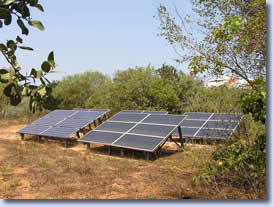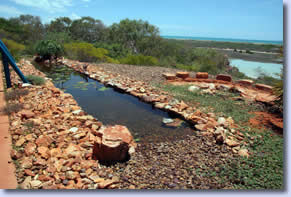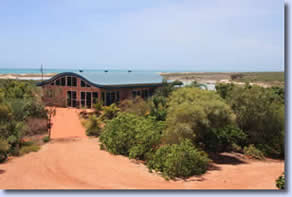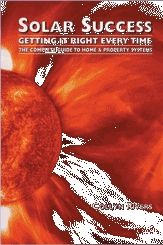Essentially, this book is about using solar energy to reduce the fossil generated electricity that we use: to reduce one's carbon footprint. Throughout, it stresses the need to reduce what one uses unnecessarily before one thinks about generating more. This can be done by three associated and economically viable approaches:
|
|
reduce energy usage by doing things differently
|
|
|
reduce energy usage by using more energy-efficient appliances
|
|
|
change the supply of energy to non-fossil fuel through appropriate technology.
|
The solar energy required is there; 7000 times more energy than the world currently uses is available.
It makes every sense to use it and countries worldwide increasingly do.

Solar is also affordable. In California, Italy and Japan, solar power now challenges power generated through natural gas and nuclear energy. In Germany, home owners' solar generated surplus fed back into the grid network and all energy generated is paid at close to five times grid electricity's buying cost.
Australia's solar take up is high in rural areas that lack grid-connection. Sales of systems that draw from and feed back to the electricity grid (i.e. grid-connect) however are slowed by our ultra-low electricity cost, and low prices paid for energy fed back. Despite this, acceptance is growing as installation rebates and (less than favourable) feed-in tariffs encourage demand, but this may be slowed as the Australian Federal government has just started to means tests grid-connect rebate applicants: on the curious basis that the scheme was attracting many more takers than had been anticipated.
The book also highlights what seems a major flaw in our rebate system; that rebates are based on existing energy usage. This makes little sense. As demonstrated throughout, major energy savings are cheap and easy to make. Example after example shows savings of 50% or more, through often inexpensive changes.
In practice, suppliers could advise changing light globes but anecdotal evidence suggests few do more than this. This is not their role. For rebate purposes, they are obliged to base their recommendations on current usage, rather than on what it might be later on. To my certain knowledge this can result in rebate assisted systems that are larger and cost more than necessary.
Rebate schemes could offer a rare opportunity to optimise energy usage. Instead, they simply replace fossil fuel generated energy by the same amount of renewable energy. The near certainty of reducing usage is squandered through lack of incentive.
Regardless of rebates, knowing what is practicable and what is less practicable with solar enables readers to evaluate what is offered. And to have an often necessary and educated say in the decisions. For those who wish to design and implement systems themselves, this book shows how to do it, and how to avoid the traps.
However you finance the system, and no matter where or how you live, follow the guidelines in this book and you will have an economic system that will supply clean and reliable power for years to come.
Solar Success is intended as a guide to follow rather than a mass of things that have to be remembered. As with my related books, Motorhome Electrics and Solar That Really Work it may become adopted as a trade text, but that is not its main intent.
To assist usage, most topics are first covered generally, and then in a hands-on installation context. The subject matter's interactive nature precludes a rigid 'read one page after the next' format. You may find it helpful to back track or read ahead. The extended Contents page, and the index at the end will also assist you to locate wanted information.
I use mostly plain English, but sometimes need technical terms to avoid confusion. All such terms are defined on pages 104-106. I include a 'Tech Notes' at the end of some chapters, but you can skip these if you wish. I avoid using conventional electrical symbols. They are meaningless to most readers. I refer to mains (grid) power as 240 volts because that is the norm in most of Australia. Many other parts of the world use 220 and 230 volts. North America uses 110 and 220 volts (see also page 6 re this).
Finally, we really do walk the walk! Our self-designed and self-installed system on our 10-acre property in the Kimberley exemplifies what is set out in this book'. The entire home, property and two offices are 100% solar. And that solar has worked superbly for the better part of ten years.
Our vehicles: a Nissan 4.2 litre TD Patrol, a dual cab HiLux. a little Sierra fire engine and our TVan camper trailer - all have solar-powered appliances. Even the 31,000 litre swimming pool runs from solar.
 |
 |
|
The Pool
|
The House
|
General
Any book written for the general public, which discusses electricity runs into an immediate problem with the term 'low voltage'. The term means different things to different people. Its legal definition varies from country to country and in none does it mean what most people think it means.
To most people, low voltage is what comes out of batteries. But to electricity regulators and, alas lawyers, low voltage means something quite different. The actual definitions are given on page 58 of the book, but briefly, that which most people regard as 'low voltage' includes the 240 volts that comes out of the wall socket!
That which comes out of that socket is also known by different names. Americans call it utility power, Britons call it mains power, some Australians call it mains power, others call it grid power. Sailors and some RV owners call it shore power. Unless noted otherwise, I use '240 volts 'to mean any or all of the above.
This, to put it mildly, tends to confuse, but legally I have no choice but to use the correct terms. I avoid them where possible but sometimes they simply have to be used.
There is also a minor complication in that the voltage that comes out of a wall socket varies from place to place. In most of Europe it's 230 volts, Australia uses mostly 240 volts, but Western Australian uses 250 volts. The USA uses 110 and 220 volts.







